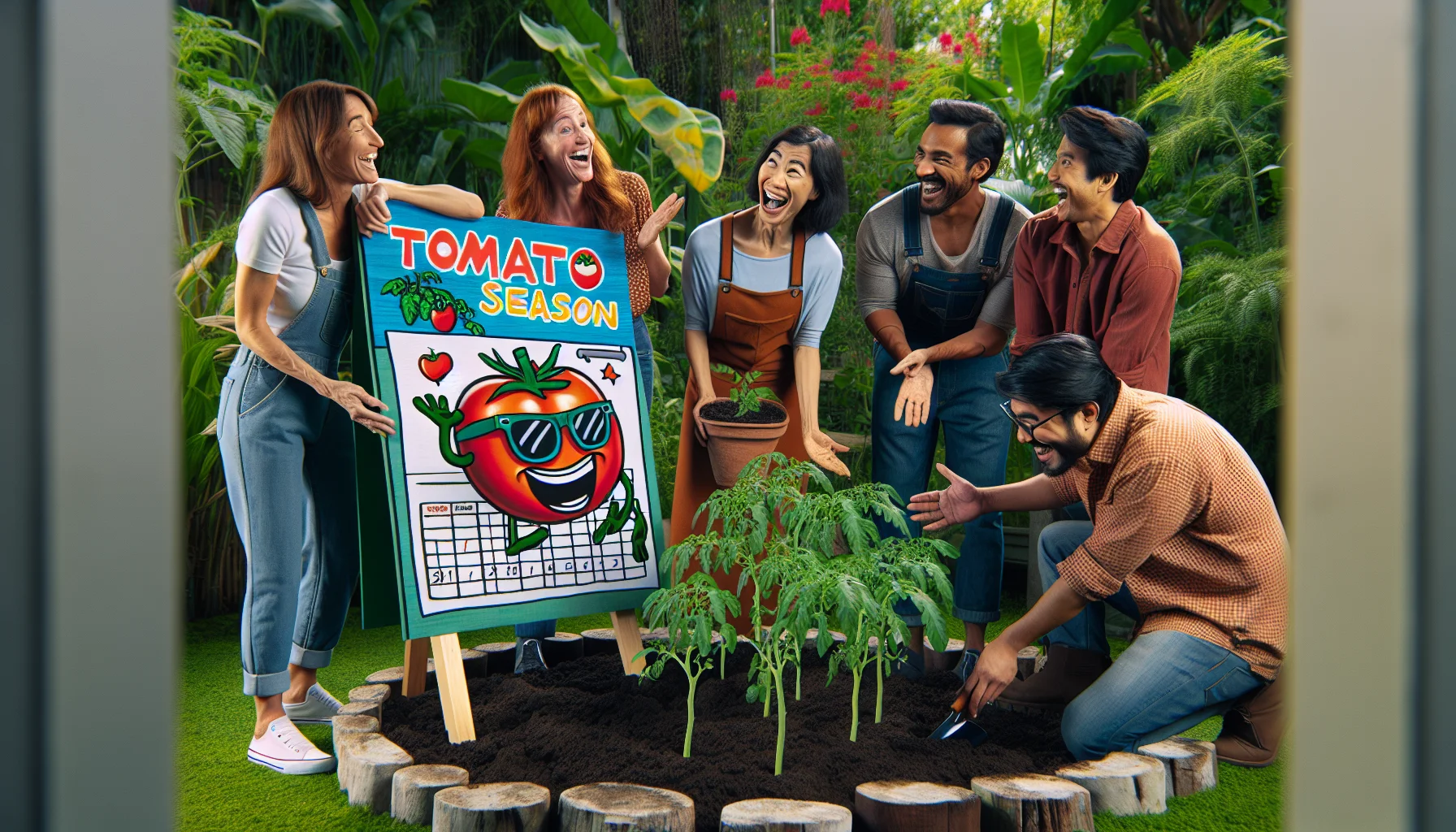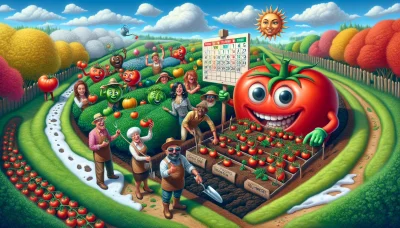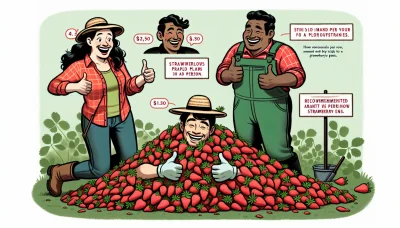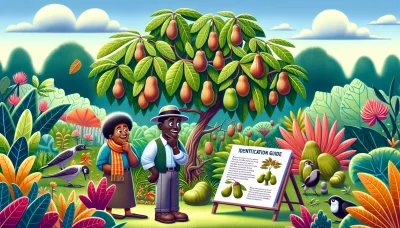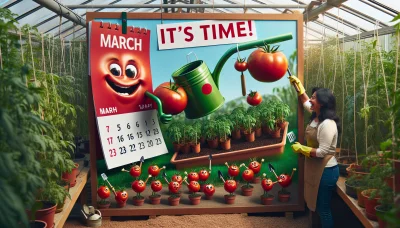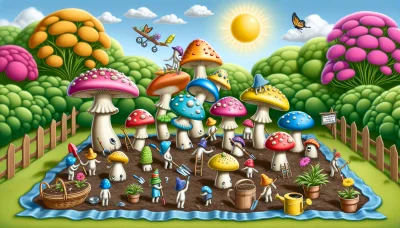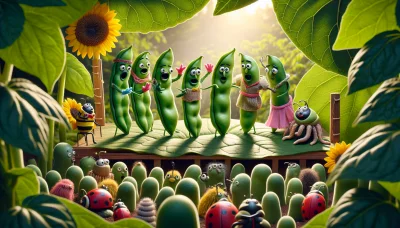When to plant tomato seedlings Quiz
Test Your Knowledge
Question of
When to Plant Tomato Seedlings
Understanding the perfect timing for planting tomato seedlings is crucial for any gardener aiming for a bountiful harvest. The right planting time is determined by the local climate and the last expected frost date. Planting too early or too late can expose your seedlings to unfavorable weather conditions, affecting their growth and productivity. Hence, mastering the timing can lead to a successful gardening season, yielding healthy and abundant tomatoes.
Understanding Your Growing Zone
Identifying your growing zone is a vital first step for any gardener, especially when it comes to planting tomato seedlings. Your growing zone, determined by the USDA Plant Hardiness Zone Map, helps you understand the climate in your area—specifically, the average annual minimum winter temperature. Knowing this allows you to select tomato varieties that are best suited to your local conditions. Planting seedlings that are appropriate for your zone ensures they can thrive, leading to a successful and bountiful harvest. Failure to plant within your zone's recommendations can result in seedlings that are ill-prepared for the local climate, potentially leading to poor growth or plant loss due to temperature extremes.
The Best Time to Plant Tomato Seedlings
- Zone 3: Late May to early June, after the last frost.
- Zone 4: Mid-May, after the danger of frost has passed.
- Zone 5: Early May, following the last spring frost date.
- Zone 6: Mid-April to early May, post the last frost date.
- Zone 7: Early to mid-April, after the frost dates.
- Zone 8: Late March to early April, considering the frost likelihood is low.
- Zone 9: Mid-February to early March, avoiding the frost period.
- Zone 10: January to February, as frost is rare and temperatures are mild.
- Zone 11: Tomato seedlings can often be planted year-round due to the warm climate.
Preparing the Soil for Tomato Seedlings
Before planting your tomato seedlings, it's essential to prepare the garden soil to ensure your plants have the best possible start. Begin by choosing a sunny spot as tomatoes thrive in full sunlight. Test the soil pH; tomatoes prefer a slightly acidic to neutral pH between 6.0 and 7.0. Amend the soil with compost to add nutrients and improve its structure, helping to retain moisture and improve drainage. It's also beneficial to mix in a balanced, slow-release fertilizer to provide additional nutrients. Loosen the soil to a depth of about 6-8 inches to allow the tomato roots to penetrate the soil easily. If you're dealing with heavy clay soil, consider raising your beds to improve drainage. These steps, when done correctly, create an ideal environment for growing healthy and productive tomato plants.
Transplanting Tomato Seedlings: Step-by-Step Guide
- Choose the right time: Wait until after the last frost and when soil temperatures are at least 60°F.
- Prepare the garden bed: Ensure the soil is rich in organic matter and well-draining.
- Acclimate your seedlings: Gradually introduce your seedlings to outdoor conditions over a week.
- Dig holes: Make them twice as wide and slightly deeper than the seedlings' containers.
- Add nutrients: Mix compost or a balanced fertilizer into the bottom of the holes.
- Plant the seedlings: Remove them from their containers, place them in the holes, and fill around them with soil.
- Water thoroughly: After planting, give your seedlings plenty of water to help establish roots.
- Support your plants: Insert a stake or cage early to support growth and prevent damage.
- Mulch around the plants: This helps retain moisture and suppress weeds.
- Monitor for pests and diseases: Keep an eye out for common issues and address them promptly.
Caring for Tomato Seedlings After Planting
After planting your tomato seedlings, it's crucial to provide them with the right care to ensure healthy growth and a bountiful harvest. Immediately after planting, water the seedlings gently but thoroughly to help settle the soil around the roots and eliminate any air pockets. In the following weeks, maintain consistent moisture by watering the plants deeply once or twice a week, rather than a little every day, to encourage deep root growth. Mulching around the plants can help retain soil moisture and regulate temperature, as well as suppress weeds. As the seedlings grow, provide support with stakes or cages to keep the plants upright and promote air circulation, reducing the risk of disease. Monitor for pests and diseases regularly, and remove any affected leaves or plants promptly to prevent spread. Fertilize the plants every few weeks with a balanced, slow-release fertilizer to provide them with the necessary nutrients for growth. Finally, as the season progresses, pay close attention to the plants' water and nutritional needs, adjusting your care as necessary to accommodate the changing weather conditions and the plants' growth stages.
Common Mistakes to Avoid When Planting Tomato Seedlings
- Not hardening off the seedlings: Gradually acclimate your tomato seedlings to outdoor conditions over a week before planting them in your garden.
- Planting too early: Wait until after the last frost to plant your tomatoes outside to avoid cold damage.
- Ignoring soil preparation: Amend your soil with compost and ensure it is well-draining to provide a healthy foundation for your seedlings.
- Planting seedlings too close together: Space your tomato plants 24 to 36 inches apart to allow for adequate air circulation and reduce disease risk.
- Skipping support structures: Install cages or stakes at the time of planting to support your tomatoes as they grow and prevent damage.
- Overwatering or underwatering: Keep the soil consistently moist but not waterlogged. Water deeply and less frequently to encourage strong root development.
- Ignoring pests and diseases: Regularly check your plants for signs of pests or diseases and take appropriate action promptly to prevent spread.
